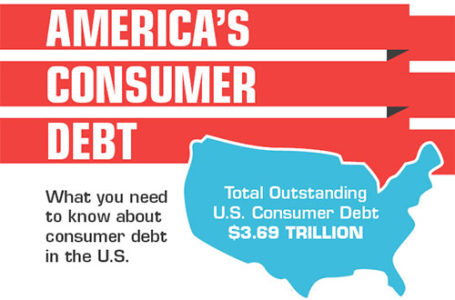10 ways to tell when it’s time to seek debt relief.
Credit cards are a revolving debt. That means the amount you owe changes, based on how much you charge. When your balances are low, your minimum payment is usually between $15-$25. So, it’s relatively easy to afford.
But as your balances increase, those minimum payment requirements do, too. The higher payments create stress on your budget. When you start to see the following warning signs, it’s time to focus on getting out of debt.
Warning sign #1: You’re living paycheck-to-paycheck
As credit card debt payments increase, they start to eat into your free cash flow and the money you should be putting into savings. If every penny is spoken for before your paycheck hits your accounts, that’s a problem.
Free cash flow is the money you have left after you pay all your regular monthly expenses. In a stable budget, you only spend 75% of what you earn. When free cash flow runs dry, you don’t have anything left to cover the unexpected expenses that inevitably pop up every month. That leads to more debt and more debt problems.
Warning sign #2: Minimum payments take more than 10%
Credit card payments should use no more than 10% of your net (take-home) income. If you’re only making minimum payments and they’re still using more than 10% of your income, that’s another sign of trouble.
Warning sign #3: Putting off expenses
If you’ve been driving around with your check engine light on, it’s not just a sign of car trouble. It’s a sign of budget trouble.
Here are some common expenses that people put off when they have too much debt:
- Car repairs that don’t make it impossible to drive
- Routine car maintenance (oil changes, tire rotations)
- Doctors’ visits and medical procedures
- Home repairs and property maintenance
Putting things off and even finding clever ways to work around them, is a sure sign that something is wrong with your budget.
Warning sign #4: You’ve maxed out at least one card
Running credit cards up to their limit is a sign of debt problems. It’s also bad for your credit. Using any more than 30% of your total credit limit will decrease your credit score. But if you’re maxing out cards it means you’re burning through money you don’t really have to be spending.
Warning sign #5: Consolidation led to more debt instead of less
Often people who are falling into debt problems will use do-it-yourself debt consolidation solutions. This may include transferring balances to a balance transfer credit card or using a debt consolidation loan. In both cases, the goal is to consolidate the debt at a lower interest rate, so you can pay it off faster.
But when you’re facing financial hardship, DIY consolidation can lead to more debt instead of less. You run up new balances before you pay off the consolidated debt. Your credit card balances go right back up and now you have new debt on top of your existing debt.
Warning sign #6: Accounts are falling behind or going to collections
Juggling your bills is another sure sign of debt problems. If you have to decide which bills to pay based on final notices you’re receiving, then you’re clearly on a slippery slope with debt. You need to stop the downward cycle and find a solution.
Warning sign #7: There’s been a change in your mail
When your credit is good and you’re doing well, you usually receive credit card offers all the time. But when you start to have debt problems, those credit card offers stop. Instead, you start receiving offers for debt solutions. Debt consolidation loans, debt settlement offers – it seems like everyone want to help you solve your debt.
Warning sign #8: You’re putting off repaying other debts
Credit cards may not be the only debt you have on your plate to repay. But other debts often offer options to pause or delay payments. That’s great for avoiding credit damage and added penalties, but it’s also a sign of debt problems.
If you’re constantly applying for forbearance or deferment on your student loans, that’s another indication that you’re not in control of your finances. The same is true for applying for Currently Not Collectible (CNC) status for unpaid tax debt. If you can’t afford all your obligations, then you need help!
Warning sign #9: You’re borrowing money from friends or family
If you’re asking for loans or money to cover emergencies from people close to you, it’s not good. That’s especially true if the money you take is a loan, because if you don’t pay it back you could ruin your relationship.
And even if you aren’t asking, but your loved ones are offering, it’s still a sign of trouble. If the people who love you see you’re struggling, they’re going to offer to help. And there’s nothing wrong with accepting the help. But you need to find a solution to your debt problems, so you can get back to being financially stable and stop taking handouts.
Warning sign #10: You’ve resorted to payday loans
The last warning sign is also the worst for your finances. If you’ve gone from running up your credit cards to taking out payday loans, that’s a huge problem. Payday loans have interest rates that are typically over 300%. If you already have debt problems and then you start taking out payday loans, you’re making a bad problem exponentially worse.
Unless you can afford to pay back a payday loan within the first two-week term, don’t use them! Instead, you need to immediately find solutions to get out of debt.

